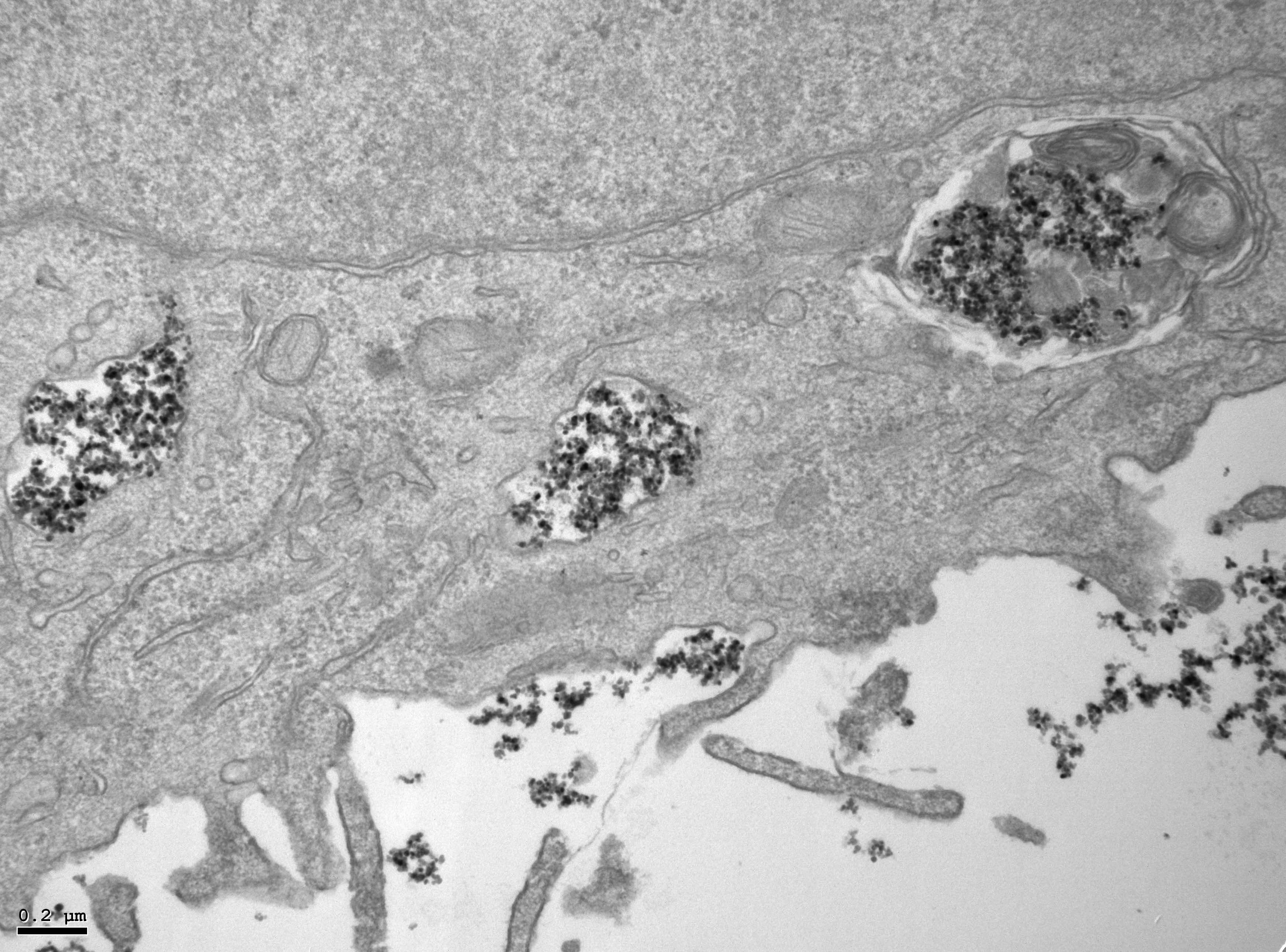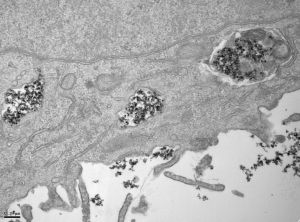
Imagen: Nanopartículas de óxido de hierro en el interior de vesículas celulares en una imagen tomada con un microscopio electrónico de transmisión (TEM). Yadileiny Portilla/Domingo F Barber, CNB-CSIC
Yadileiny Portilla, investigadora en el CNB y primera autora del trabajo junto con Vladimir Mulens, destaca “al final, el tipo de recubrimiento y el aumento de tamaño de la nanopartícula por su asociación con proteínas del medio biológico son esenciales para dictar las rutas de entrada celular y el tránsito intravesicular, así como en la velocidad de degradación celular. En las células tumorales, las nanopartículas se acumulan en endolisosomas donde se degradan más lentamente, mientras que en las células macrofágicas del entorno tumoral, la degradación ocurre más o menos rápidamente dependiendo del recubrimiento, ya que en función de este se acumulan en vesículas con diferente capacidad de degradación. Estos hallazgos son de vital importancia a la hora de diseñar las nanopartículas ya que podremos, en función de su futura aplicación, potenciar el efecto deseado dependiendo de la diana terapeútica”.
La utilidad de las nanopartículas magnéticas en biomedicina
El uso de las nanopartículas de óxido de hierro está ampliamente extendido en varios campos de la biomedicina, ya que podrían facilitar la liberación dirigida de fármacos y biomoléculas, su capacidad para producir calor se utiliza en el tratamiento de cáncer por hipertermia intracelular y además son capaces de generar un contraste ampliamente utilizado en diagnóstico en imágenes de resonancia magnética.
En los últimos años han aumentado los ejemplos del uso de nanopartículas en terapias antitumorales. Estos resultados obtenidos en estudios tanto in vitro como en modelos animales hacía pensar en una rápida traslación de estas tecnologías a la práctica clínica. Sin embargo, para hacer realidad este salto, es necesario profundizar en el conocimiento de los mecanismos moleculares y celulares que las nanopartículas pueden inducir y los procesos que regulan su eliminación a nivel celular y orgánico. Ambos aspectos son claves, ya que afectan tanto la eficacia terapéutica de las nanopartículas como a su biocompatibilidad con el organismo.
Más información
Y Portilla, V Mulens-Arias, A Paradela, A Ramos-Fernandez, S Perez-Yagüe, MP Morales, DF Barber. The surface coating of iron oxide nanoparticles drives their intracellular trafficking and degradation in endolysosomes differently depending on the cell type. Biomaterials 2022 281-121365 http://doi.org/10.1016/j.biomaterials.2022.121365






